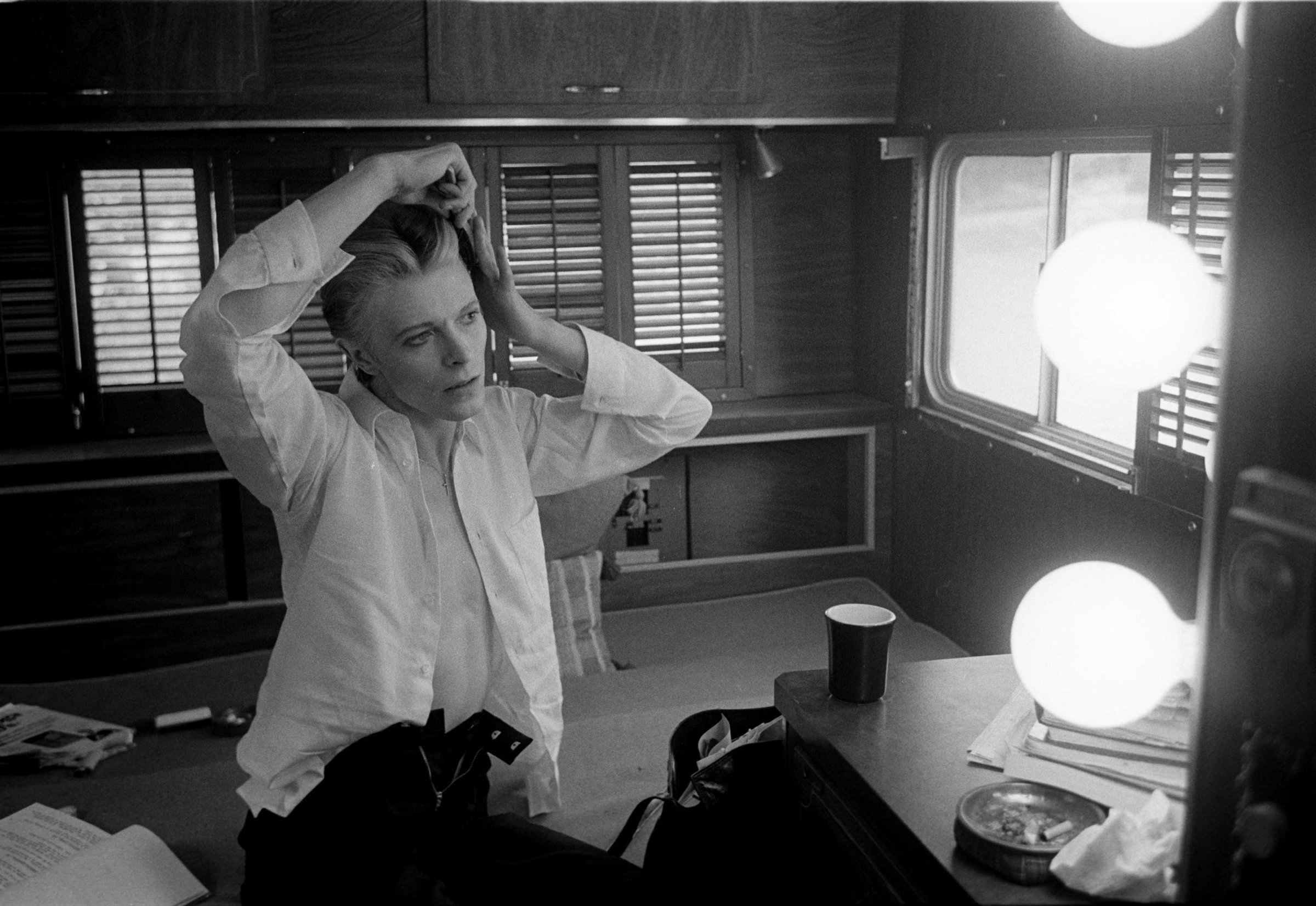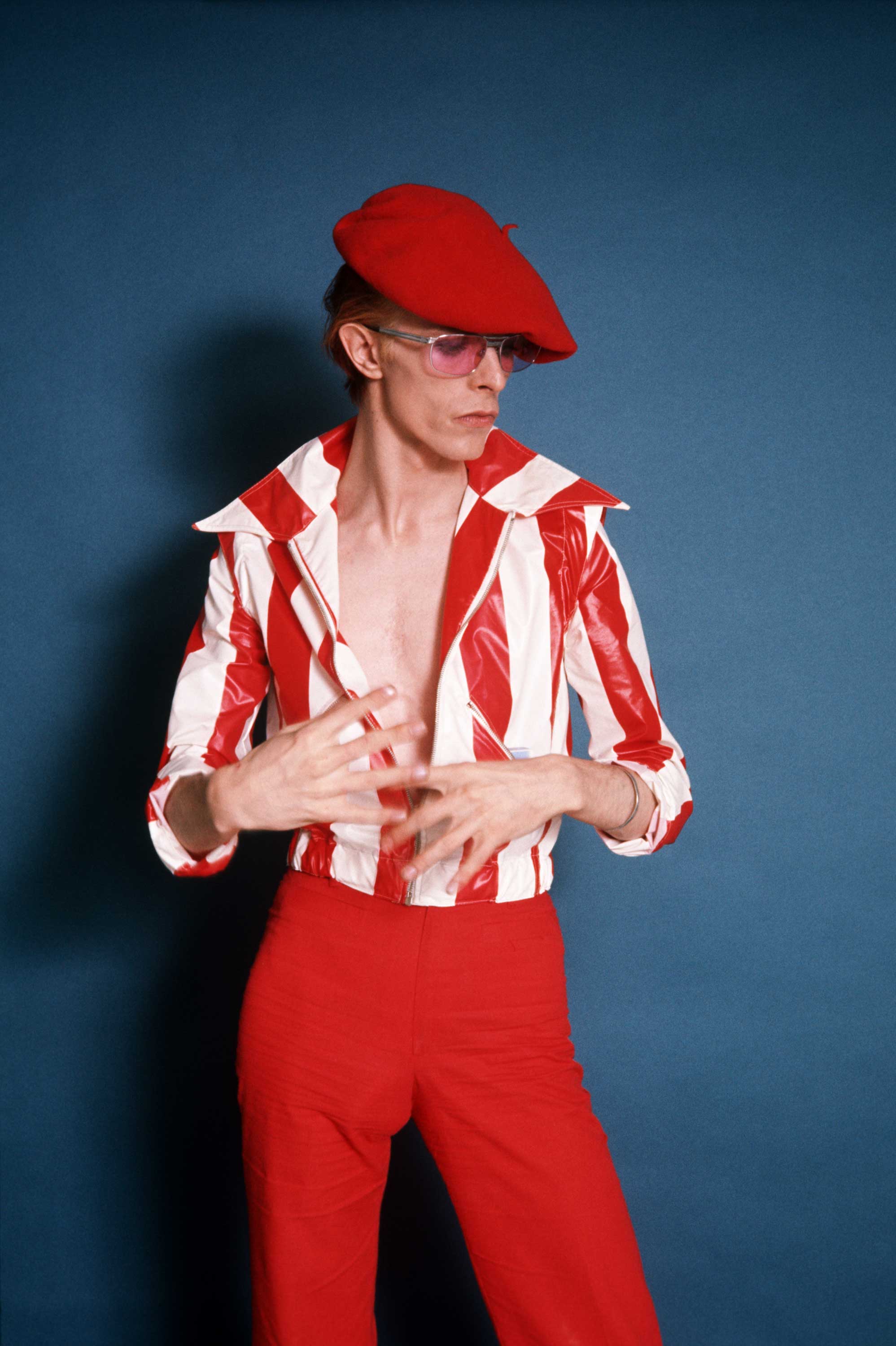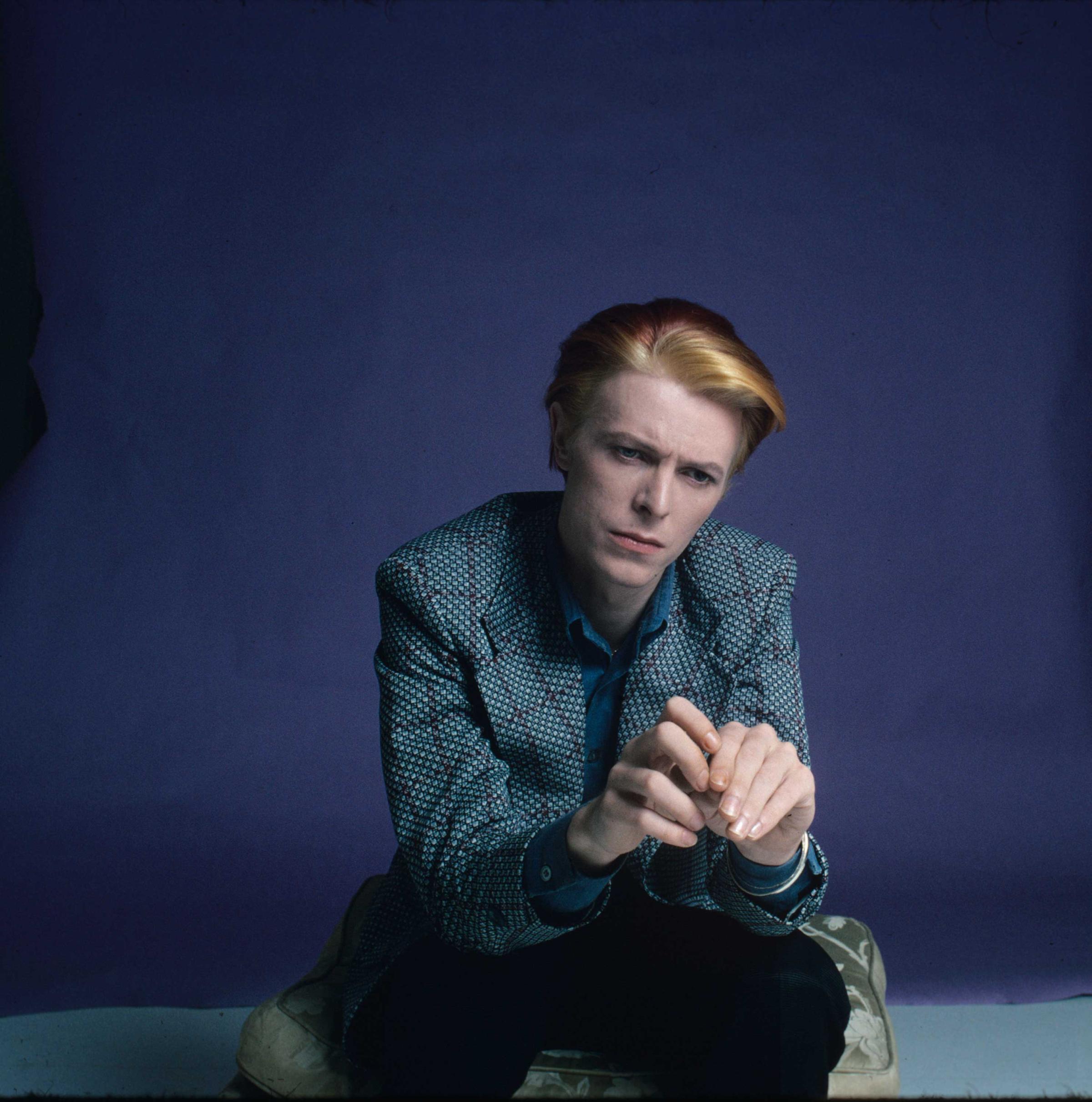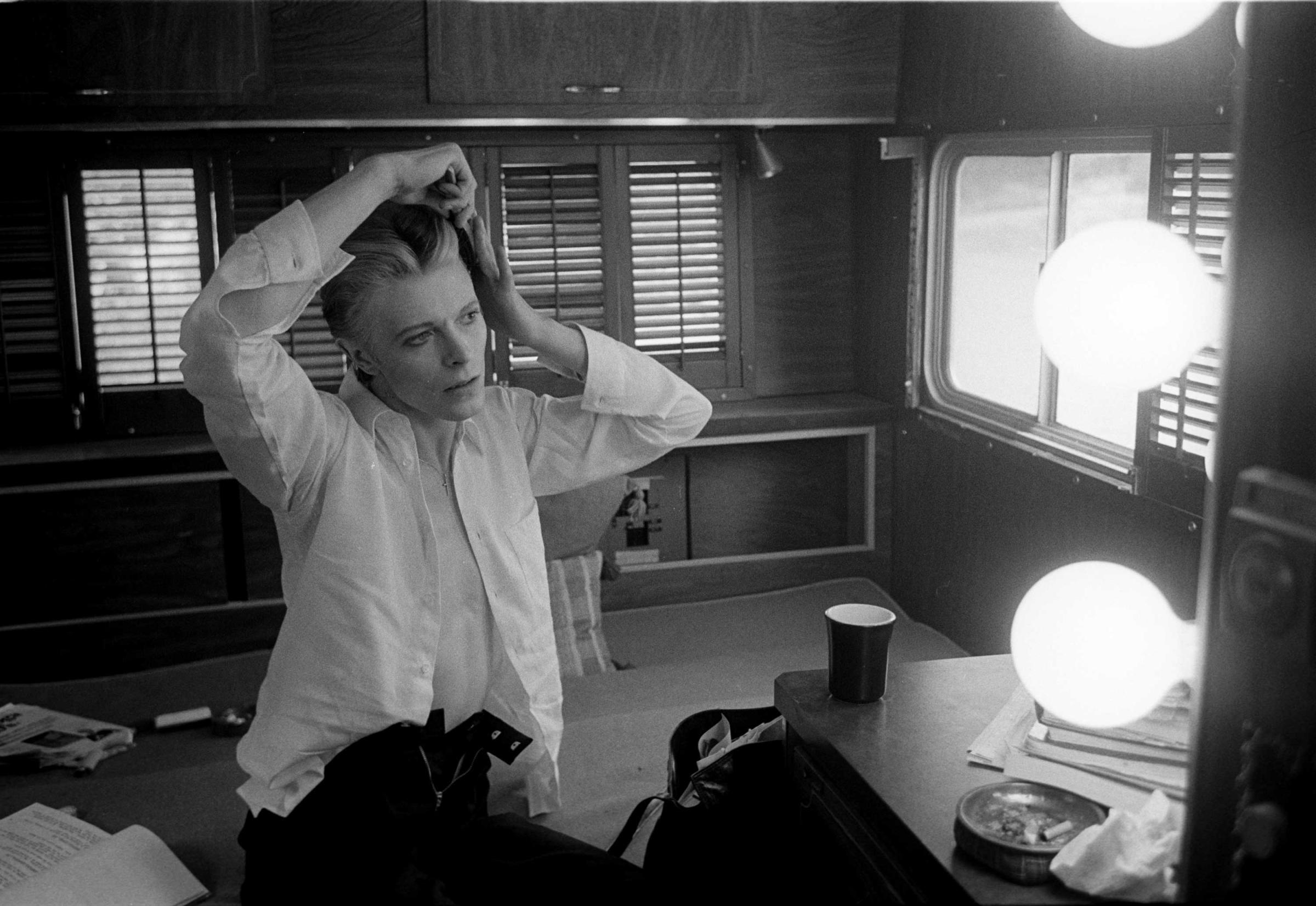
As a musician, actor and fashion plate, David Bowie was in constant curation of his life’s work, always seeking new avenues of expression, new characters to inhabit, new ideas to reinvigorate and inspire his own. When he presented them to us, they generally appeared flawless: Ziggy Stardust in impossibly jaunty jumpsuits, the Thin White Duke and his backswept copper mane, the perfectly pastel pop star of Let’s Dance. The look, the man, the music had all been groomed into a tantalizing sheen that defined the essence of Bowie’s enduring appeal.
In addition to offering a host of iconic images from the mid-1970s, Bowie, a new collection of archival photographs by Steve Schapiro, captures the fleeting moments when the mask dropped, when the effort it took to create all of this wondrous puffery showed at the seams, when he occasionally made—unbelievable!—fashion blunders. Bowie, it turns out, looked terrible in mandals (a faux pas he made while renting a West Hollywood house previously inhabited by Frank Sinatra and Marilyn Monroe). His ghastly white toes weren’t helped by the addition of high-waisted navy blue trousers paired with purple suspenders and a plaid newsboy’s cap.
Still, that was just one look. There would be many others, especially on an epic day in 1974 when Schapiro photographed the pop star at a Los Angeles studio for 12 straight hours before finally wrapping up at 4 a.m. Schapiro captured him as a kabbalah-scribbling soothsayer, an image that would later appear on the back cover of Station to Station. He also shot moto-Bowie, with the singer perched behind the handlebars wearing vintage goggles, a polyester shirt with pastoral scenes and a tie wide enough to be mistaken for a breastplate. Then there was a red-and-white number that made him look like a cross between a Times Square hustler and a peppermint candy. Every time he changed clothes, Bowie changed his expression and attitude, using the shoot as a visual jam session, riffing on the characters who might inhabit such outrageous costumes. All this chameleonic play was part of his process. He’d keep the shots that looked great, and toss the ones that didn’t. People magazine liked one of the shots and put it on the cover, with an avocado-green background that Bowie and Schapiro intentionally chose because they thought it was hideous.
In 1975, Schapiro photographed the set of Nicolas Roeg’s film The Man Who Fell to Earth, where he found a playful Bowie goofing around with a prop pellet gun (while wearing a rope belt and, yes, mandals). With a Dixie cup in one hand and his left eye squinted shut while aiming at a tiny target, Bowie looks particularly unglamorous. But when he added a pair of rose-tinted, steel-framed sunglasses and balanced a cigarette precipitously between his lips, he’s the epitome of cool in an image that wound up on the cover of Rolling Stone in February of 1976. The transformation of the mundane into the magnificent can take place in a moment, and Schapiro and Bowie both knew how to turn that moment into a myth.
Steve Schapiro’s Bowie is published by powerHouse Books and is available now.
Marie Tobias, who curated this photo essay, is an Associate Photo Editor at TIME.
Isaac Guzmàn is the Culture Editor at TIME.








More Must-Reads From TIME
- The 100 Most Influential People of 2024
- Coco Gauff Is Playing for Herself Now
- Scenes From Pro-Palestinian Encampments Across U.S. Universities
- 6 Compliments That Land Every Time
- If You're Dating Right Now , You're Brave: Column
- The AI That Could Heal a Divided Internet
- Fallout Is a Brilliant Model for the Future of Video Game Adaptations
- Want Weekly Recs on What to Watch, Read, and More? Sign Up for Worth Your Time
Contact us at letters@time.com